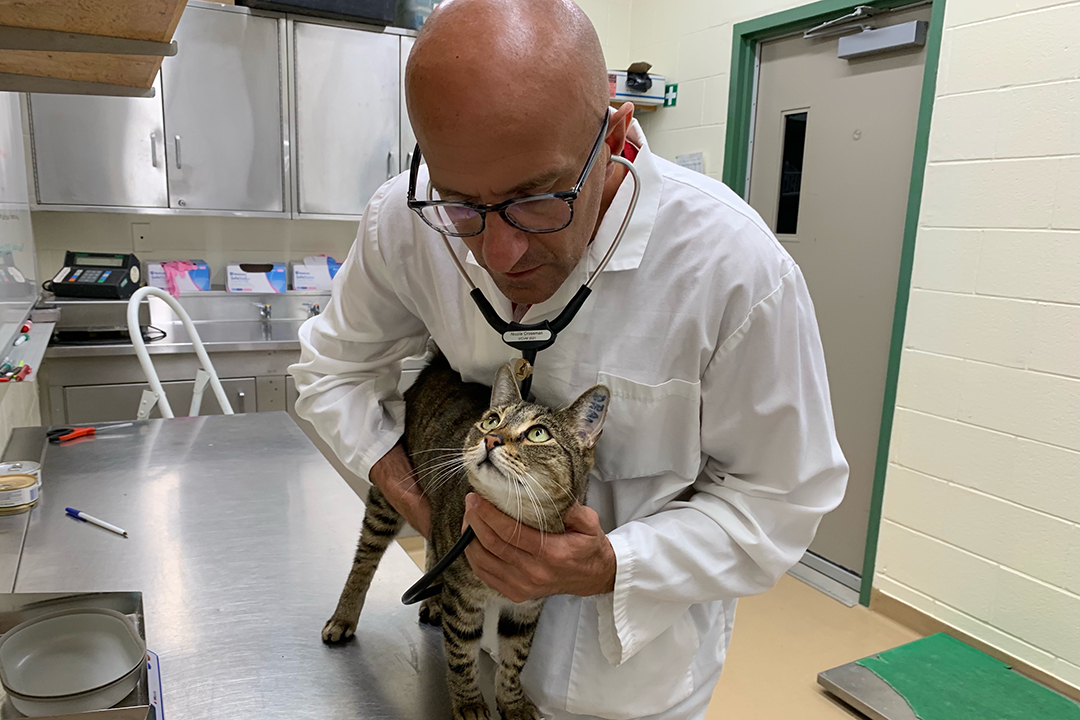
Seasonal link to ‘urinary blockage’ in cats?
Veterinary researchers at the Western College of Veterinary Medicine (WCVM) are investigating whether the time of year affects feline urethral obstruction (UO) in Saskatchewan’s cat population.
By Nicole CrossmanUO is associated with several conditions affecting the urinary bladder and the urethra (the tube that carries urine from the bladder for elimination) in cats. Some examples of these disorders include urinary stones, a mucus or crystalline obstruction, and interstitial cystitis (sterile urinary inflammation).
“Urethral obstructions have been reported to account for up to 10 per cent of feline emergencies.” says Dr. Kevin Cosford, a small animal internal medicine specialist at the WCVM who is leading the research study.
To determine if there is a seasonal connection to feline UO in Saskatchewan, the WCVM researchers conducted a retrospective study of feline cases. They examined medical records between 2006 and 2019 from the WCVM’s Small Animal Clinic, with a special focus given to cats diagnosed with urethral obstructions. Then, they compared the number of obstructed cats to the overall cat admissions seen over the same time frame.
Cosford was inspired to start this research because of how common UO is in the feline population and his years of clinical experience working with cats affected by this disorder.
"The underlying reason for doing this is to look into the cause of the disorder, with the hopes that maybe it'll help us understand how to better prevent and potentially treat the disorder,” he says.
While veterinarians do not know what causes many cases of feline UO, the condition is most common in neutered male cats that are overweight. Important factors associated with feline UO include diet, environment, water intake and stress levels.
Interestingly, the time of year may also be an important contributing factor. Recent published research from the northeastern United States observed higher rates of blocked cats in the spring from March to May — but the same increase in cases was not observed in the country’s northwestern states during that same time period.
Some researchers hypothesize that feline UO may have a hormonal basis, driven by increasing day length. Adrenal androgens are natural steroid hormones, such as testosterone, that are synthesized in the adrenal gland and testes. Some scientists speculate that altered adrenal androgens in neutered male cats during the spring are involved in some cases of feline UO.
WCVM researchers are still analyzing findings from their study, but if the results suggest that seasonality is a possible risk factor for feline UO, further research may be warranted so the research team can measure androgen levels in cats at different times of the year in Saskatchewan.
If one season is identified to have a higher incidence of feline UO, then investigation into the underlying factors leading to this phenomenon may help to prevent future cases of the disease, says Cosford.
Nicole Crossman of Rosetown, Sask., is a third-year veterinary student at the Western College of Veterinary Medicine (WCVM). Her story is part of a series of articles written by WCVM summer research students.
